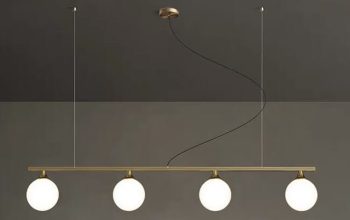Introduction
Milk glass, a type of opaque or translucent glass with a milky white appearance, has been popular as a decorative item since the 16th century. Its popularity soared during the Victorian era and the 20th century, and it remains a favorite among collectors and antique lovers to this day. In this article, we will delve deeper into the history of milk glass, its notable features, and how to incorporate it into your home décor.
History of Milk Glass
The origins of milk glass are uncertain, but some historians believe that it was first produced in Rome during the 1st century AD. However, it became popular during the 16th century when European glassmakers started producing it for the aristocracy. In the 19th century, milk glass became more affordable and accessible to common people, particularly in America, where manufacturers such as Westmoreland and Fenton introduced mass-produced milk glassware.
Milk glass gained an unparalleled level of popularity during the Victorian era, where it was used for various purposes such as vases, bowls, plates, and lamps. It was considered a luxury item and displayed in cabinets or used in formal settings. In the 20th century, milk glass became more colorful, with manufacturers introducing shades of blue, pink, green, and yellow.
Features of Milk Glass
Milk glass is known for its milky white appearance, which is achieved through the addition of opacifiers such as bone ash or tin dioxide. It is often decorated with raised patterns, embossed designs, or hand-painted motifs. Milk glass is also heavier than regular glass, with a delicate and smooth texture that makes it pleasant to hold.
There are different styles of milk glass, each with its distinct features. For instance, hobnail milk glass features small bumps or knobs on the surface, while milk glass with a beaded pattern has tiny beads around the edges.
One of the most remarkable features of milk glass is that it can glow under certain circumstances. Uranium glass, a type of milk glass produced in the early 20th century, contains uranium oxide that makes it glow when exposed to ultraviolet light. This feature has made Uranium glass a coveted collectible item.
Incorporating Milk Glass into Your Home Décor
There are various ways to incorporate milk glass into your home décor, depending on your style and preference. Here are some ideas:
1. Showcasing Milk Glass Collections
If you are a milk glass collector, you can display your collections in a prominent area where they can be admired. For instance, you can use a curio cabinet, an antique hutch, or a glass vitrine to showcase your milk glassware. You can also group them by color or style for a more cohesive look.
2. Using Milk Glass as Vases
Milk glass vases are versatile and can be used for various types of flowers and arrangements. You can use them to display freshly cut flowers, branches, or even succulents. You can also mix and match milk glass vases of different sizes and shapes to create an eclectic and interesting look.
3. Combining Milk Glass with Other Decorative Elements
Milk glass can be paired with other decorative elements such as wood, metal, and textiles to create a cohesive and harmonious look. For example, you can use milk glass candlesticks on a wooden tabletop, or you can use a milk glass lamp on a metal nightstand. You can also use milk glass objects in combination with other vintage or antique objects.




